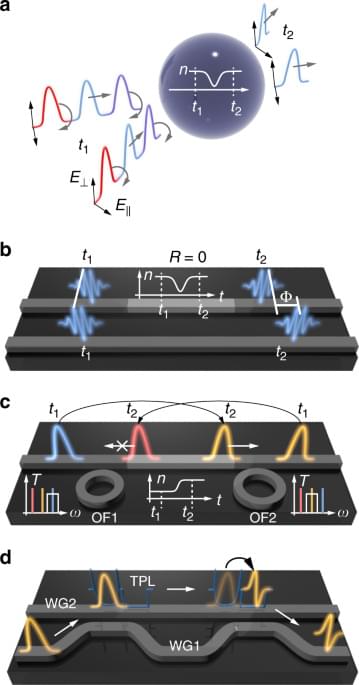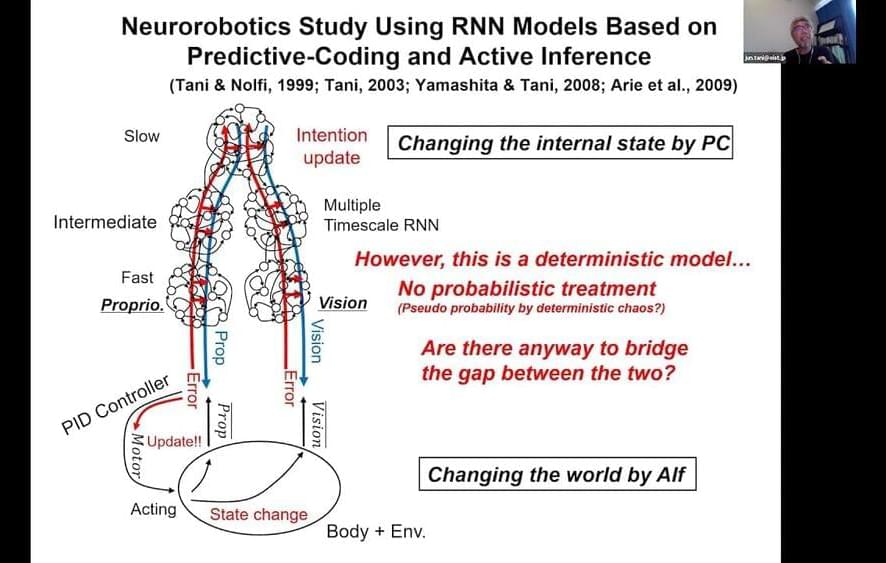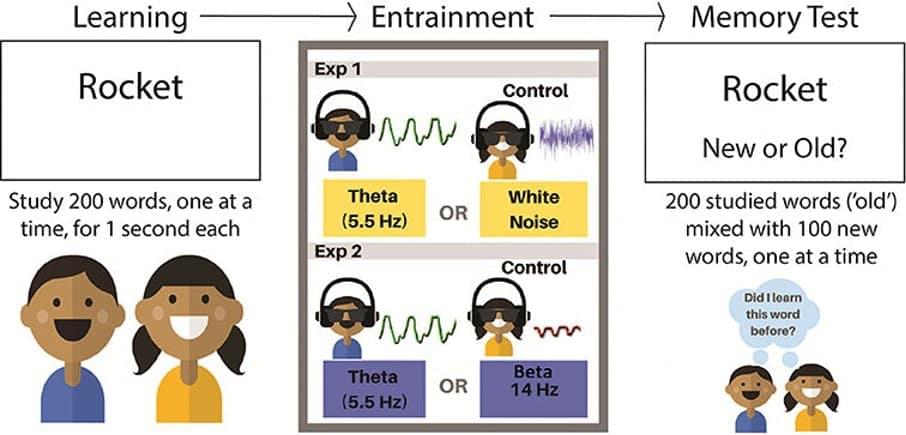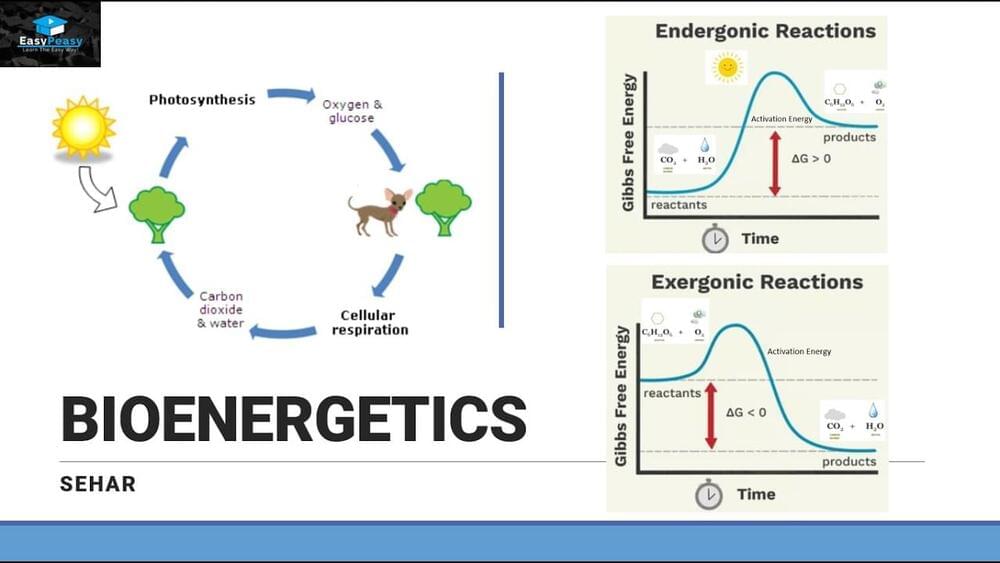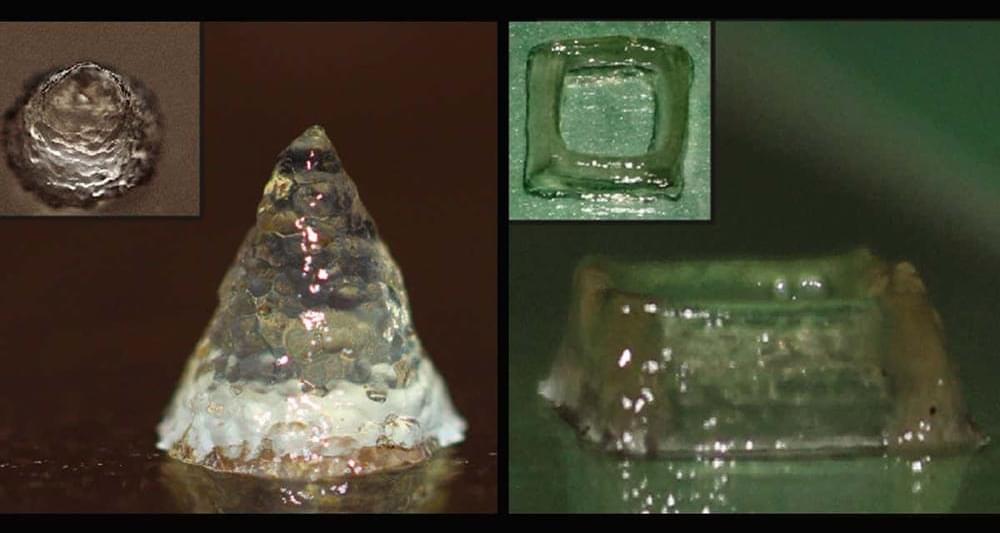Supersymmetric quantum mechanics enables the description of phenomena exhibiting a supersymmetry only in the space domain. Here, the authors show an underlying time-domain supersymmetry exists in optics, acoustics, and elasticity, and study its properties and potential applicability.
Astronomers may have seen the light from two black holes smashing into one another for the first time ever.
Black holes are completely dark and therefore invisible to light-detecting telescopes. So far, the only way astronomers have been able to “observe” black holes colliding is by detecting the resulting gravitational waves.
On-chip frequency shifters in the gigahertz range could be used in next generation quantum computers and networks.
The ability to precisely control and change properties of a photon, including polarization, position in space, and arrival time, gave rise to a wide range of communication technologies we use today, including the Internet. The next generation of photonic technologies, such as photonic quantum networks and computers, will require even more control over the properties of a photon.
One of the hardest properties to change is a photon’s color, otherwise known as its frequency, because changing the frequency of a photon means changing its energy.
Summary: Entrainment can safely manipulate brain waves to induce improvements in memory, a new study reveals.
Source: Florida Institute of Technology.
The brain is made of millions of cells called neurons, that send electrical messages to talk to each other in patterns of vertical electric activity called oscillations. By inducing them first, then finding the amplitude of the specific brain waves is improved during memory, ultimately memory performance itself is boosted. Once introduced, what if a person can boost the speed of these oscillations to improve memory? A university study in a journal for adolescents may show we can.
Introduction of Bioenergetics
Posted in futurism
This video explains introduction of bioenergetics.
Thank You For Watching.
Please Like And Subscribe to Our Channel: https://www.youtube.com/EasyPeasyLearning.
Like Our Facebook Page: https://www.facebook.com/learningeasypeasy/
An ink made using engineered bacterial cells can be 3D-printed into structures that release anti-cancer drugs or capture toxins from the environment.
The microbial ink is the first printable gel to be made entirely from proteins produced by E.coli cells, without the addition of other polymers.
“This is the first of its kind… a living ink that can respond to the environment. We have repurposed the matrix that these bacteria normally utilise as a shielding material to form a bio-ink,” says Avinash Manjula-Basavanna at the Massachusetts Institute of Technology in Boston.
Candidates can ask for an explanation or a human review.
‘AI’ includes all technologies – from decision trees to neural networks.
The regulation is needed and already, there is discussion about adding ageism and disabilities to this audit.
Prepare to be Baffled.
The misconception is that electrons carry potential energy around a complete conducting loop, transferring their energy to the load. This video was sponsored by Caséta by Lutron.
Further analysis of the large circuit is available here: https://ve42.co/bigcircuit.
Architecture firm Skidmore, Owings & Merrill (SOM) has presented ‘Urban Sequoia’ – a concept for transforming the built environment into a network for absorbing carbon.
